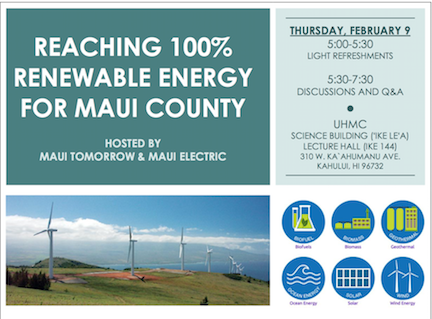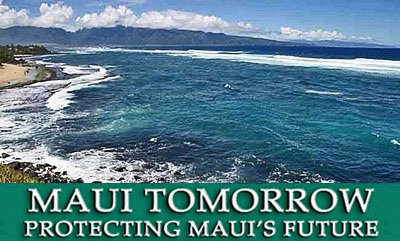Monday, January 16th, 2012, from 6-8 pm Lahaina Civic Center (social hall) Public presentation by Robin Knox, water quality expert, who will be discussing the State of Hawaii Water Quality Monitoring and Assessment Report and the importance of the public comment period.
Take Action! This workshop will include an opportunity for public participation – bring a laptop (we’ll have a couple available) to record comments to submit to the DOH. Come to learn more and get involved…leave having made a difference!
Background:
The State Department of Health has released the 2008/2010 State of Hawaii Water Quality Monitoring and Assessment Report for public review. The comment period has been extended until January 31, 2012.
Details here:
http://hawaii.gov/health/
The federal Clean Water Act requires the state to monitor the quality of water in streams, wetlands, and oceans; to assess whether the water is meeting the state water quality goals (standards); and to report every two years to Congress those waters not meeting the goals of “fishable, swimmable” waters. By law, studies are required for impaired waters to establish the Total Maximum Daily Loads (TMDL) for the pollutants causing the loss of the use (such as fishing or swimming or growing coral reefs).The Hawaii Department of Health failed to submit this report to Congress during 2008, so this is the first update since the 2006. The report does not consider any new monitoring locations since 2006, but updates the assessment
using the data from January 2006 to December 2009.
Why is it Important?
The list of impairments helps to set priorities for agency actions and funding. For Maui waters, the report proposes to delist (remove from the impaired waters list) fecal indicator bacterial impairment from Kahului Harbor, Kalama Park, and Kalepolepo Beach Park, indicating to the public that these waterbodies have suitable water quality for recreational uses. These are some of the most polluted recreational areas on Maui where some of the highest levels of bacteria of all kinds are found due to the enriched environment because pollution is food for microbes. One important question to ask is whether these proposed delistings are due to improvement in water quality or whether the delisting results from the change in state water quality standards that “lowered the bar” for water quality by raising the acceptable level (criteria) for fecal indicator bacteria from 7 to 35
organisms/ 100 ml.
Robin S. Knox will present the report’s decisions for Maui Island, answer questions, and provide guidance to those who want to submit comments on the proposed decisions. Robin has 28 years experience in Clean Water regulation, is the Coordinator of the Southwest Maui Watershed Plan, and was part of the UH research teams investigating impacts of sewage injection on reefs
http://
microbial populations in Maui waters with and without sewage discharges.
http://www.hcri.ssri.hawaii.edu/files/research/pdf/TOONEN-HCRI%20Final%20Rep
ort_09-22-10.pdf



